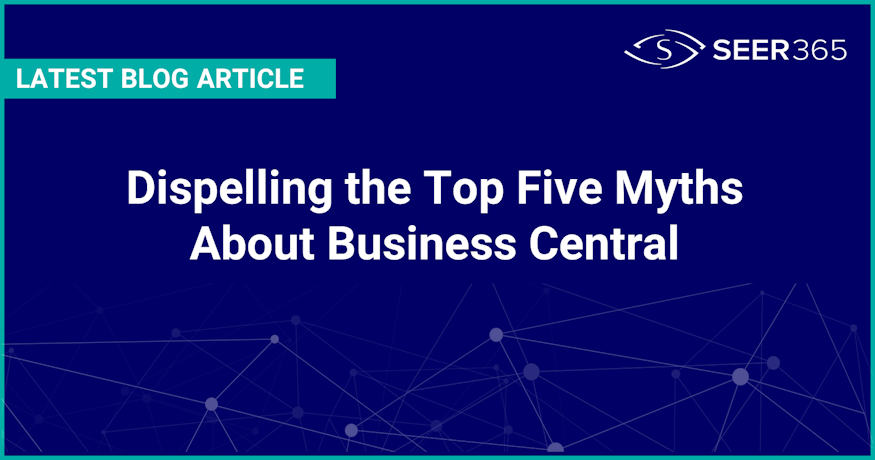Why a Fit-Gap Analysis Is Crucial for a Successful Dynamics 365 Business Central Implementation

Implementing Dynamics 365 Business Central is a major milestone for any organization. It promises streamlined operations, modern tools, greater flexibility, and long-term growth.
However, here’s the reality check: without a deep understanding of how your current processes align (or don’t align) with the new system, your project can easily run into trouble. That’s why a detailed fit-gap analysis is critical.
In this article, we’ll walk through why fit-gap analysis matters, how it helps you avoid common ERP pitfalls, and why focusing on a process-first approach dramatically increases your chances of success.
Why Skipping Fit-Gap Analysis Is a Risk You Can’t Afford
When you embark on a Dynamics 365 Business Central implementation, it’s very tempting to recreate your old processes exactly as they are. After all, they feel familiar. But sticking to old habits often backfires, leading to serious issues such as:
- Costly customizations: Modifying the system to fit outdated methods usually results in expensive design, coding, testing, training, and ongoing support.
- Lost innovation: You miss valuable opportunities to modernize and streamline your operations by clinging to legacy processes.
- Inefficiencies: Many old processes don’t align with the optimized workflows and automation that Business Central offers.
- Reduced system benefits: Excessive customizations mean you miss out on Microsoft’s continuous updates, support resources, and seamless integrations.
- Longer project timelines: Complexity from customizations can cause delays that snowball into missed deadlines and extended budgets.
A fit-gap analysis provides the clarity you need to sidestep these problems, creating a smoother path to transformation.
What Exactly Is a Fit-Gap Analysis?
A fit-gap analysis compares your organization’s current business processes against the built-in capabilities of Dynamics 365 Business Central. It helps you:
- Identify “fits”: Where your needs naturally match the system’s standard processes.
- Spot “gaps”: Where there are differences that may require process changes, configuration, or, in rare cases, customization.
The ultimate goal isn’t to customize away every gap. Instead, it’s to:
- Adopt standard processes wherever feasible.
- Adapt only when it delivers significant business value.
- Avoid excessive complexity, hidden costs, and long-term headaches.
Taking a process-focused, objective approach from the start helps ensure a successful, sustainable ERP rollout.
Why Fit-to-Standard Analysis Must Come First
Before you can understand what doesn’t fit, you need to understand what already does. That’s why fit-to-standard analysis is the logical first step in any successful Dynamics 365 Business Central implementation.
Starting with a fit-to-standard analysis allows you to:
- Establish a baseline: It gives your team a clear picture of what Dynamics 365 can do out of the box. This sets the foundation for any future decisions.
- Create a shared understanding: It helps business users, IT, and leadership align on what the system is designed to support—and where real needs for change exist.
- Promote smarter decision-making: When you understand the standard first, you're better equipped to judge whether a customization is truly worth the cost.
- Reduce the urge to over-customize: Starting here encourages a mindset of configuration over customization, helping your team prioritize what's essential versus what’s habitual.
- Accelerate the project timeline: With fewer surprises down the road, you avoid the costly delays that often come from discovering late-stage misalignments.
This early-phase analysis isn’t about diving into the technical details—it’s about building a strategic framework for the rest of the project.
What Happens During the Gap Analysis Phase
After you’ve explored standard fits, the next step is carefully evaluating where real gaps exist—and whether they genuinely need to be filled.
Key considerations include:
- Evaluate the true business impact: Is the gap critical to your success or merely a preference rooted in “the way we’ve always done it”?
- Weigh the cost versus benefit: How much time, money, and ongoing effort will the customization require? Is it worth it?
- Explore alternatives: Could a configuration tweak, Power Platform solution, or ISV add-on meet the need with less risk?
Sometimes, the smartest move is to adjust your business processes slightly to match Business Central’s design rather than forcing heavy modifications.
The Hidden Costs of Over-Customization
It’s natural to want to tailor your ERP solution, especially if you’ve relied on custom features in your previous systems. But over-customizing can come at a cost:
- Higher long-term effort: Customizations increase the amount of time and attention needed during upgrades and testing phases.
- Increased complexity: The more you customize, the more complex your environment becomes—adding to the learning curve for users and internal teams.
- Missed efficiencies: By sticking too closely to legacy processes, you may miss the opportunity to streamline workflows using standard Dynamics 365 capabilities.
- Limited flexibility for future improvements: Custom features can box you into specific ways of working, reducing your ability to evolve and adopt new tools easily.
That said, there’s absolutely a place for thoughtful, value-driven customization. At Pelorus Technology, we work with a broad network of trusted ISV partners whose solutions extend Dynamics 365 capabilities in meaningful and supported ways. The key is to design these enhancements intentionally—not simply to recreate old add-ons, but to solve specific, high-value business needs.
With the right planning and alignment, your solution can remain agile, efficient, and fully supported from initial discovery through post-go-live.
Why a Process-First Approach Sets You Up for Success
A process-first approach transforms your implementation from a technical deployment into a strategic business initiative. At Pelorus Technology, we leverage tools like GYDE365 to bring speed, clarity, and consistency to every stage of your Dynamics 365 journey.
Using GYDE365-Discover, we help you:
- Eliminate bottlenecks: Replace lengthy workshops with self-service portals that capture detailed requirements from clients or internal users anytime, anywhere.
- Deliver instant documentation: Deliver fit-gap reports, estimates, and proposals for your project in record time.
And once a project moves into implementation, GYDE365-Design allows us to:
- Streamline solution design: Clients can complete in-depth design surveys immediately after project sign-off.
- Free up key people: Reduce the time you’re tied up in project meetings and instead receive greater value from the expertise of our team.
- Accelerate timelines: Projects move faster—often reducing the Analysis & Design phase by up to 60%.
With this approach, our clients experience less disruption, faster time to value, and better alignment across the entire implementation team. We don’t just install software—we guide you through an optimized transformation journey with full support from discovery through adoption.
Key Benefits of Doing Fit-Gap Analysis the Right Way
Spending time upfront on fit-gap analysis delivers a powerful return later. Benefits include:
- Faster Implementations: Less time spent on unnecessary rework and endless revisions.
- Lower Costs: Minimized custom coding means lower development and maintenance expenses.
- Stronger User Adoption: Teams embrace a system that feels intuitive and powerful.
- Simplified Upgrades: Standard systems are easier and cheaper to keep current.
- Stronger ROI: You make the most of your ERP investment by focusing resources where they matter most.
- Greater Flexibility for the Future: Staying close to standard makes it easier to extend functionality later with new Microsoft updates or marketplace solutions.
Build Your Foundation for A Successful Business Central Implementation
Dynamics 365 Business Central offers enormous potential—but realizing that potential hinges on smart, strategic planning. A fit-gap analysis isn’t just a box to check off. It’s the foundation of a successful, scalable, and future-proof implementation.
Need help preparing your fit-gap analysis for Business Central?
Talk to our team at Pelorus Technology today. We’ll show you how our approach and GYDE365 guarantee a successful project and give you the clarity, confidence, and momentum you need!
Contact us today at Pelorus Technology to elevate your business operations with our expert Microsoft Dynamics 365 solutions and Services. As a Global Microsoft Partner, we are committed to streamlining your processes and delivering top-tier services tailored to your needs. Let’s get started on your transformation journey!









